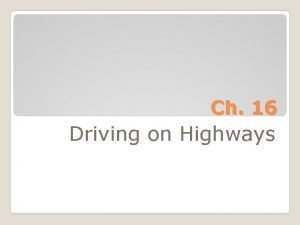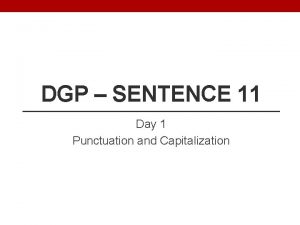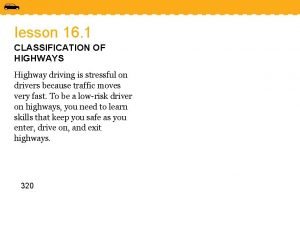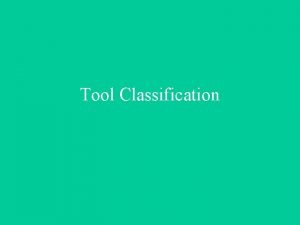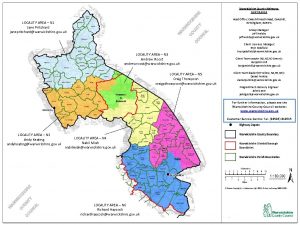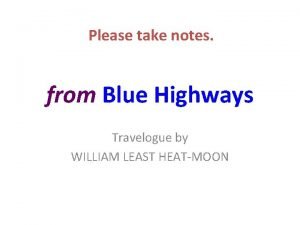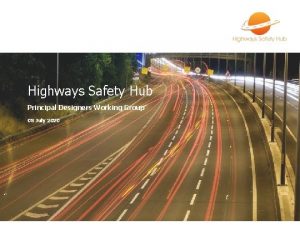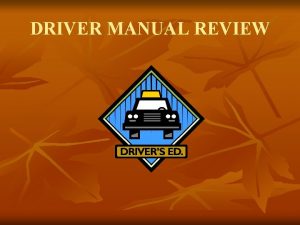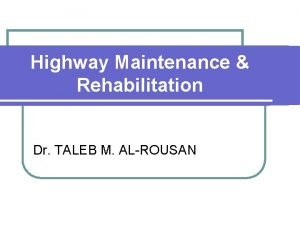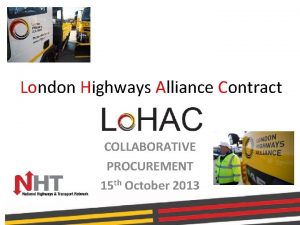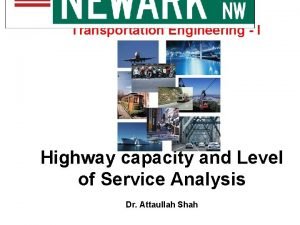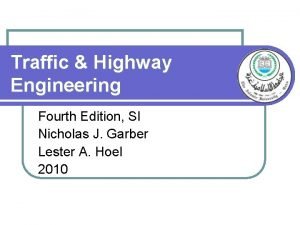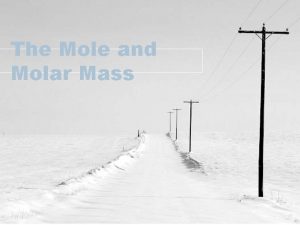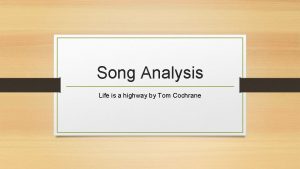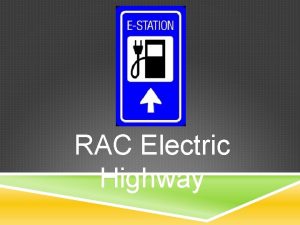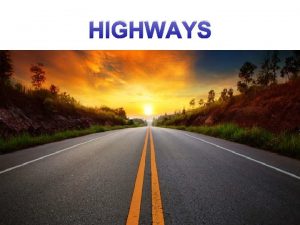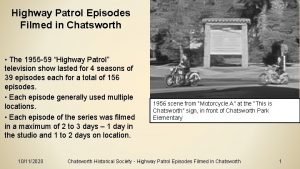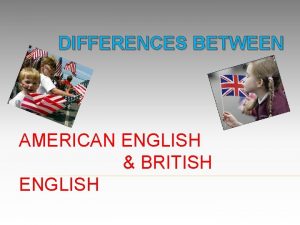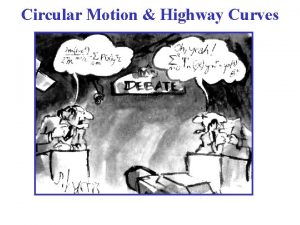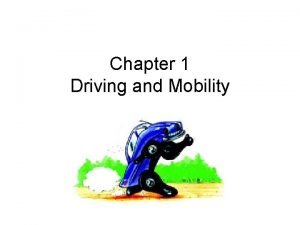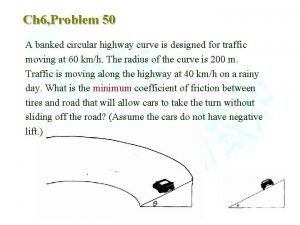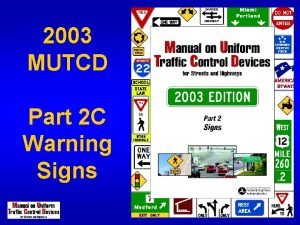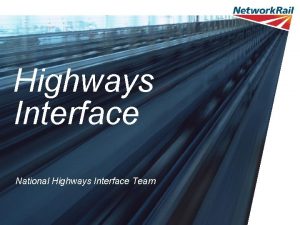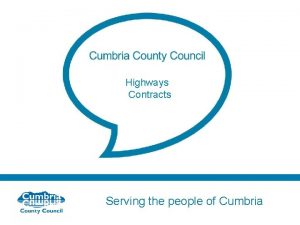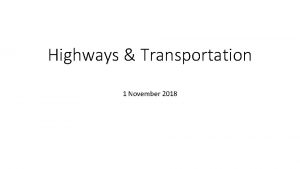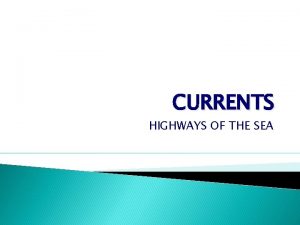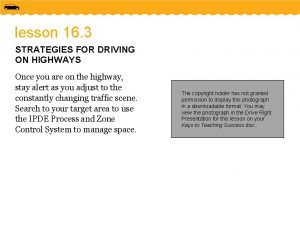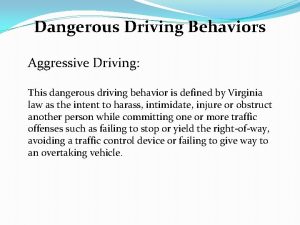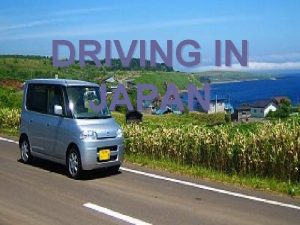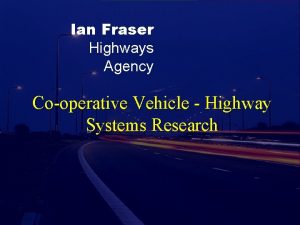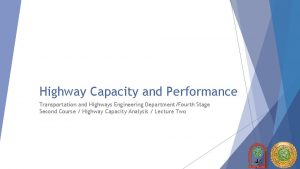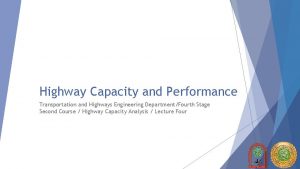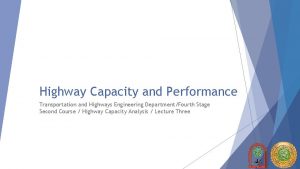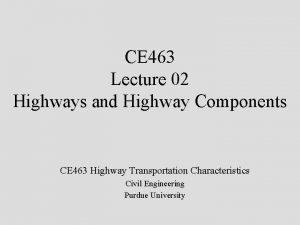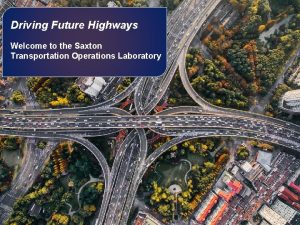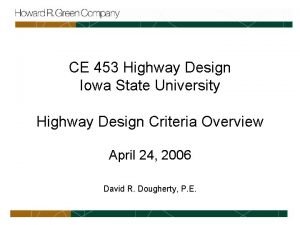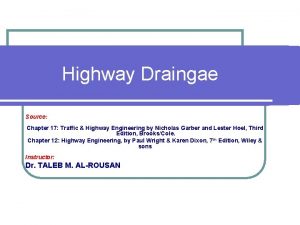lesson 16 1 CLASSIFICATION OF HIGHWAYS Highway driving



























- Slides: 27

lesson 16. 1 CLASSIFICATION OF HIGHWAYS Highway driving is stressful on drivers because traffic moves very fast. To be a low-risk driver on highways, you need to learn skills that keep you safe as you enter, drive on, and exit highways. The copyright holder has not granted permission to display this photograph in a downloadable format. You may view the photograph in the Drive Right Presentation for this lesson on your Keys to Teaching Success disc.

Explain the difference between highways that OBJECTIVE have fully controlled access and those that have non-controlled access.

Three Classifications of Highway Systems The three classifications of highways are • Interstate Highway System • U. S. Highway System • State Highway System Some states also have county highways, which have the same characteristics as state highways.

Names and design features for highways vary. Sometimes freeways are called expressways, or expressways are called freeways.

Interstate Highway System In the Interstate System, every access has to be a fully controlled access, which means that vehicles can enter and leave only at designated interchanges. Interchanges are places where drivers can cross over or under traffic as well as enter or leave the freeway. The copyright holder has not granted permission to display this photograph in a downloadable format. You may view the photograph in the Drive Right Presentation for this lesson on your Keys to Teaching Success disc.

There is a uniform standard for signs for interstates. The interstate highway sign is a red, white, and blue shield.

The even numbered routes run east and west, with the lowest numbered routes beginning in the south.

The odd numbered routes go north and south, with the lowest numbers beginning on the west coast.

Freeways have at least two travel lanes going in opposite direction. Traffic is separated by grade elevation, which means that bridges and tunnels are used to direct traffic over or under other travel lanes.

Without traffic lights or STOP signs, the freeway can accommodate a larger volume of traffic and reduce the potential for high-speed rear-end crashes.

Freeways can have tolls. The word free in freeway refers to the fact that traffic can flow freely without traffic lights.

Expressways The difference between a freeway and an expressway is that an expressway may have non-controlled access. This means that expressways could have traffic lights, intersections, and driveways.

If you predict that there could be a traffic light, or a vehicle entering from a side road, you will have ample time to adjust your speed and control the traffic to the rear.

If you are suddenly confronted with stopped traffic, you will be at great risk of rear-ending the vehicle ahead or of being rear-ended by others.

OBJECTIVE Describe three kinds of highways that are located in each state.

Turnpikes and Parkways Turnpike was used to designate a toll road. However, many of the highways classified as turnpikes no longer charge tolls.

Commercial traffic and billboards are prohibited on parkways. Some parkways may have traffic lights to accommodate crossing traffic, which can create a dangerous situation. The copyright holder has not granted permission to display this photograph in a downloadable format. You may view the photograph in the Drive Right Presentation for this lesson on your Keys to Teaching Success disc.

U. S. Highways Most of the state highways and U. S. highways have non-controlled access. Non-controlled access allows drivers to enter and leave the highway from any point.

U. S. highways have intersections with traffic controls to separate crossing traffic. This makes traveling slower and more dangerous than being on a controlled-access freeway.

State Highways The State Highway System is a network of highways within the boundaries of a state. State highways can be narrow twolane roadways, expressways, and others may be controlled-access freeways.

OBJECTIVE Describe four different types of highway interchanges.

Freeway Interchanges The four most common types of freeway interchanges are cloverleaf, diamond, trumpet, and all-directional interchanges. The names of the interchanges are based on their shapes.

A cloverleaf interchange has entrance and exit ramps that resemble the outline of a four-leaf clover. This type of interchange enables drivers to proceed in either direction on either highway. The copyright holder has not granted permission to display this photograph in a downloadable format. You may view the photograph in the Drive Right Presentation for this lesson on your Keys to Teaching Success disc.

A diamond interchange is used when a road that crosses a busy highway has little traffic. The copyright holder has not granted permission to display this photograph in a downloadable format. You may view the photograph in the Drive Right Presentation for this lesson on your Keys to Teaching Success disc.

A trumpet interchange is used where one highway forms a T -intersection with a freeway. The copyright holder has not granted permission to display this photograph in a downloadable format. You may view the photograph in the Drive Right Presentation for this lesson on your Keys to Teaching Success disc.

An all-directional interchange is used in complicated intersections with high-volume traffic. This kind of interchange channels traffic in many different directions. The copyright holder has not granted permission to display this photograph in a downloadable format. You may view the photograph in the Drive Right Presentation for this lesson on your Keys to Teaching Success disc.

lesson 16. 1 review 1. Explain why knowing the difference between a fully controlled-access highway and a non-controlled access highway helps to make you a low-risk driver. 2. Name the four types of interchange, and how they help to keep traffic moving.
 What is velocitation
What is velocitation Definition of velocitation
Definition of velocitation While we were driving on the brewton highway
While we were driving on the brewton highway Classification of highways
Classification of highways Classification of driving tools
Classification of driving tools Examples of testing tools
Examples of testing tools Highways warwickshire
Highways warwickshire Blue highways sparknotes
Blue highways sparknotes Highways safety hub
Highways safety hub Alabama’s basic speed law states that
Alabama’s basic speed law states that Irc specification for camber
Irc specification for camber Importance of highways
Importance of highways London highway alliance
London highway alliance Hcm 1985
Hcm 1985 Traffic and highway engineering 4th edition
Traffic and highway engineering 4th edition Mole highway
Mole highway Life is a highway poem
Life is a highway poem Signs signs everywhere signs meaning
Signs signs everywhere signs meaning Rac electric highway
Rac electric highway Highway planning and alignment
Highway planning and alignment Highway surveys
Highway surveys Clint eastwood highway patrol
Clint eastwood highway patrol What does montag hear in the seashell
What does montag hear in the seashell An american highway and a british
An american highway and a british Highway curves banked and unbanked
Highway curves banked and unbanked Chapter 1 driving and mobility
Chapter 1 driving and mobility A banked circular highway curve is designed
A banked circular highway curve is designed End of a divided highway sign
End of a divided highway sign

